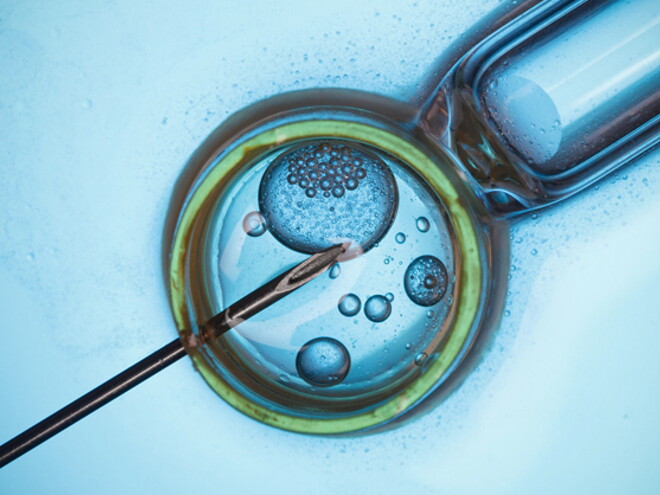
It used to be that when you couldn’t have a child, you would just have to live with that. However, the modern couple has some options available to them. One of them is in vitro fertilisation treatment (IVF treatment). Despite sounding like a fancy name for some new unknown technology, the idea behind it is relatively simple. Let’s take a look at what it is, and how it works.
What is IVF treatment?
IVF treatment is basically fertilisation of an egg outside the body. The sperms are taken from the male. The eggs are taken from the female. They are put together, they get fertilised and they form an embryo, the embryo is put back into the female. That’s basically the story of IVF treatment.
Why do couples choose IVF treatment?
One of the main reasons why you may be thinking of IVF treatment is unexplained infertility; where the infertility isn’t due to common causes, and the actual cause hasn’t been found.
For males, it’s normally impaired sperm or function; where there is abnormal sperm – low sperm concentration, weak sperm or abnormally sized sperm cells. However, if it’s a sperm problem, you may want to check with a specialist to determine the actual problem before going for IVF treatment.
On the female side, there are certain conditions that may influence your choice for IVF treatment. Disorders such as fallopian tube damage, ovulation disorders, premature ovarian failure or endometriosis, or uterine fibroid can interfere with the fertilisation of eggs.
Also, if one has had tubal ligitation before, where the fallopian tubes are cut or blocked to prevent pregnancy, IVF treatment may be an option.
How does IVF treatment work?
- Super Ovulation
You may be given a fertility hormone known as gonadotrophin, as an injection for around 12 days. This will help your ovaries produce more eggs. You may have transvaginal ultrasounds to examine the ovaries and blood tests to check hormone levels. - Collecting the eggs
Your eggs may be collected via a surgery called follicular aspiration. Using a ultrasound probe for guidance, a needle is inserted through the vagina into the ovary and follicles containing the eggs, and suction pulls out the eggs and fluid one at a time. After collection, you will be given medication to prepare your womb for embryo transfer. - Insemination and Fertilisation
Your healthiest eggs are placed with sperm (either your partner’s or a donor’s) and stored for 16-20 hours, a process known as insemination. The fertilised eggs will divide; these bunch of cells are known as embryos. - Embryo transferx
The embryos are transferred to the woman’s womb. A speculum is used to hold the vagina open so they can see the cervix. A caterer is passed through the cervix, and with it the embryos are passed down into the womb. If there are extra embryos, they can be kept for the future – in case the first cycle fails, or if you want to have another baby in the future.
IVF Treatment Success Rates
A huge factor in a successful pregnancy from IVF treatment is age. Just like in natural conception, there is a lower chance of pregnancy as you age. The reproductive systems (both the organs and the cells) of women and men tend to decline with age, just like your skin smoothness and ability to do a somersault. And of course, healthy cells have a better chance of forming healthy embryos.
A healthy body helps, so keep the cigarettes away, reduce the coffee and say no to alcohol. And, get your weight to manageable level with healthy exercise and nutritious food.
If you’ve had another child before, it does increase your chances of success.
The Advantages and Disadvantages of IVF Treatment
So now you know how IVF treatment works, what’s next? Well, unlike choosing whether or not to perm your hair (as fancy as that may be), there are of course some risks of opting for IVF treatment. In some cases, however, there’s no better option.
The Advantages
IVF treatment offers an option for couples who have infertility problems as listed earlier. If you really want a child, and all alternative treatments have failed, IVF treatment could help you give birth to a healthy child.
Also, in the case of blocked or damaged fallopian tubes, it reduces the need for surgery. Because insemination occurs outside the body, invasive surgery on the fallopian tubes may not be necessary.
The Disadvantages
There are risks of choosing IVF treatment.
- Multiple Births
If you’re absolutely certain that you want just a single child, this may throw your plans off track. With IVF treatment, there is an increased chance of multiple births. You may get twins or even triplets. While some may jump for joy at the prospect, there are risks of complications such as premature births, miscarriages, gestational hypertension, anaemia, or birth defects. Also, additional children may affect your family planning and budget for the future. Raising a child is a costly affair. - Side effects from fertility medication
Fertility drugs used to prepare you for IVF treatment have their own risks; in some cases you may experience abdominal pain, mood swings, bloating and headaches. - The Cost
IVF treatment isn’t cheap. Fees may include charges for medication, tests, processing, and embryo transfers. If the first cycle fails, you may have to fork out additional cash for the next cycle. - Ectopic Pregnancy
An ectopic pregnancy is where the embryo implants in a fallopian tube or in the abdominal cavity. The embryo won’t survive outside the uterus, and can cause problems such as internal bleeding.
How much does IVF cost?
The cost varies according to the individual, and the requirements. Your treatment cycle may be different from another hopeful mom. Different hospitals and specialised fertility clinics have different rates as well. Of course, public hospitals are the cheaper option. Public hospitals may have rates starting from above RM8,000, while some clinics offer prices up to RM15,000 and above for the initial cycle.
In Conclusion
It can be a tough choice to make. If you really want the experience of bearing your own child, and other treatments are unavailable, then by all means go for it. However, if the cost will be a burden, especially when you have a child to raise for the next 20 plus years, then you may want to consider other options. Adoption, for one, gives you an opportunity to become a parent. An adopted child can be an awesome part of the family you want to build together.
In the end, it’s your choice to make; talk with your partner and family for support. We wish you the best of luck, and we hope you’ll be able to have that family you’ve always wanted.











